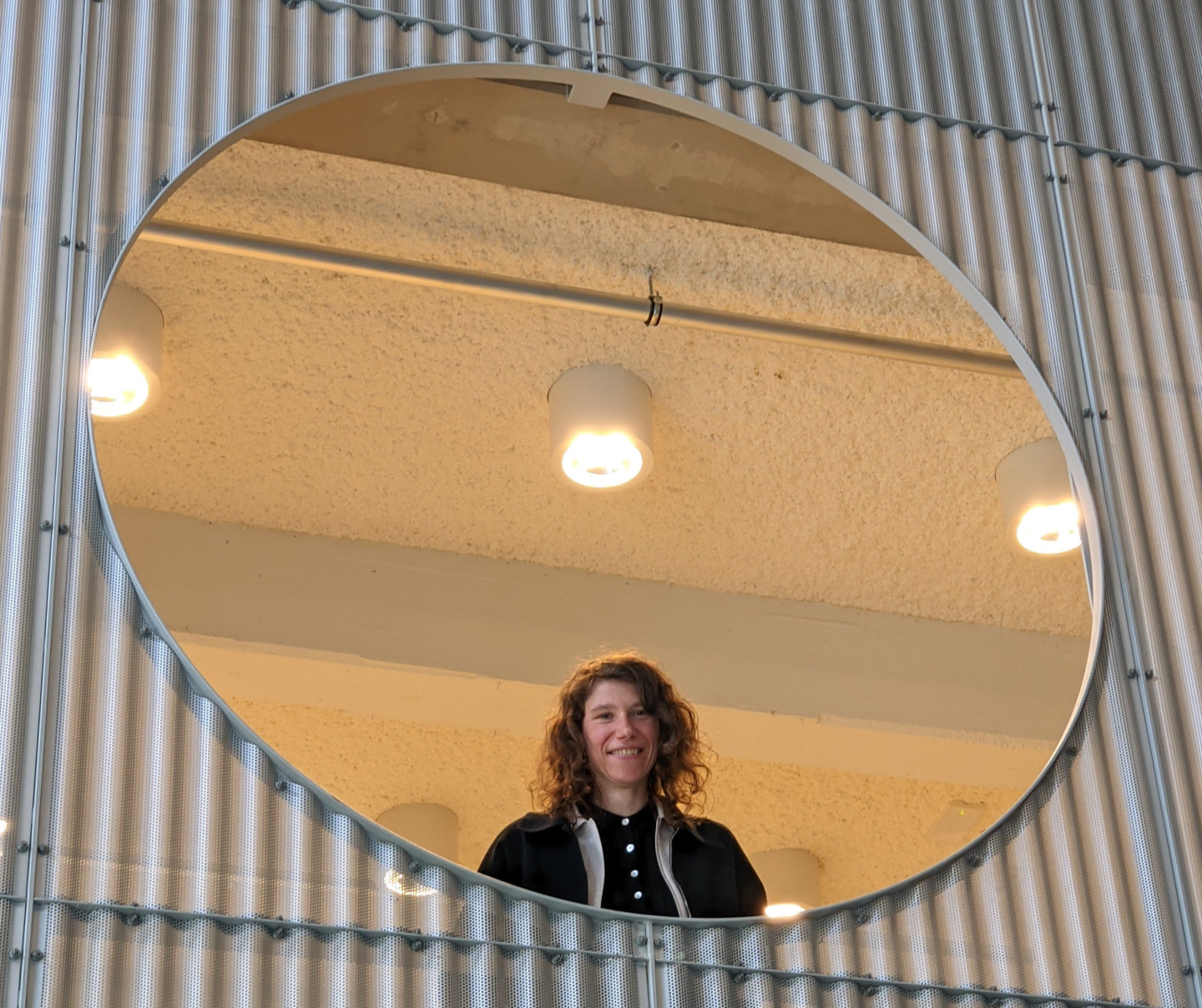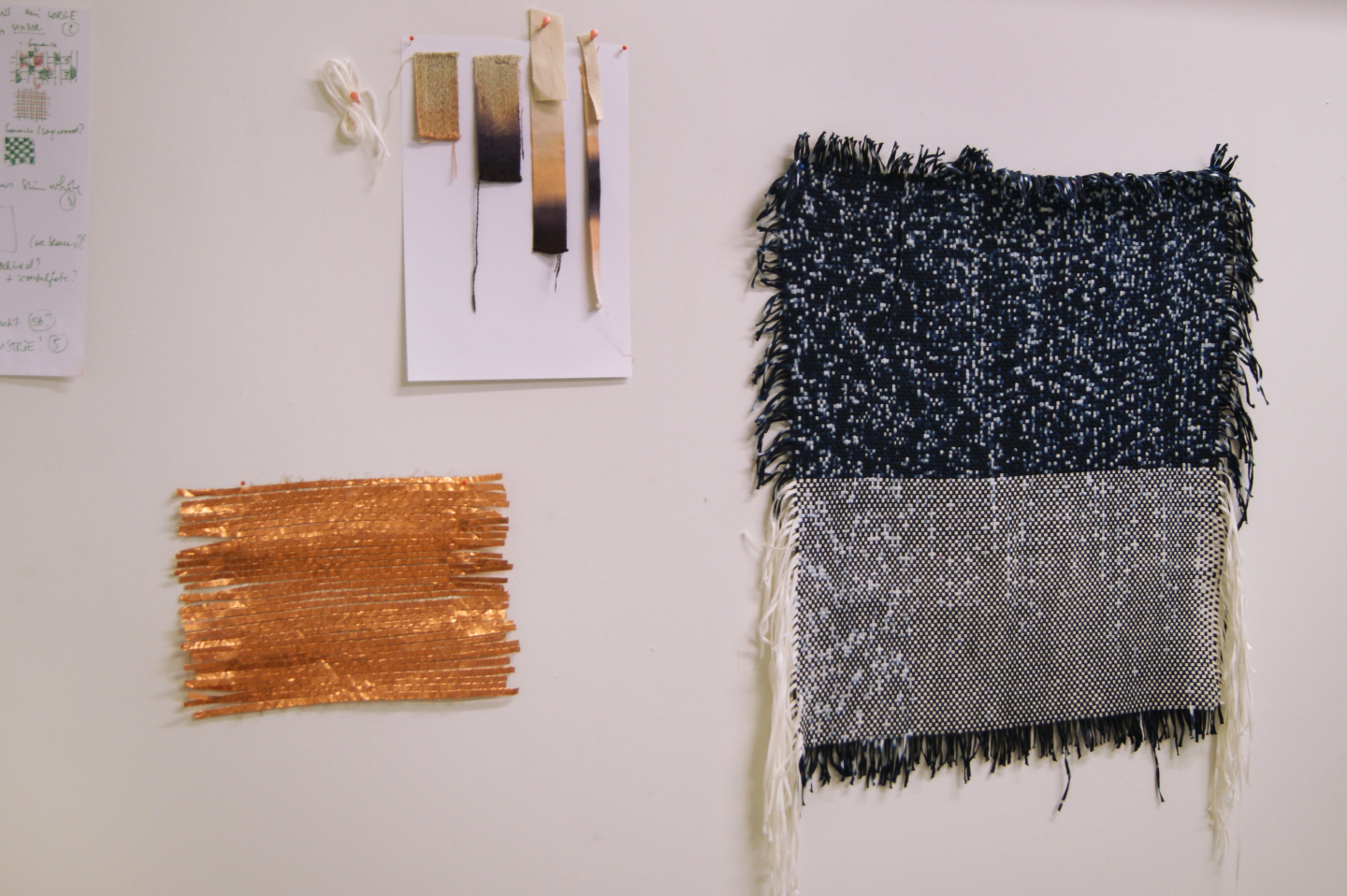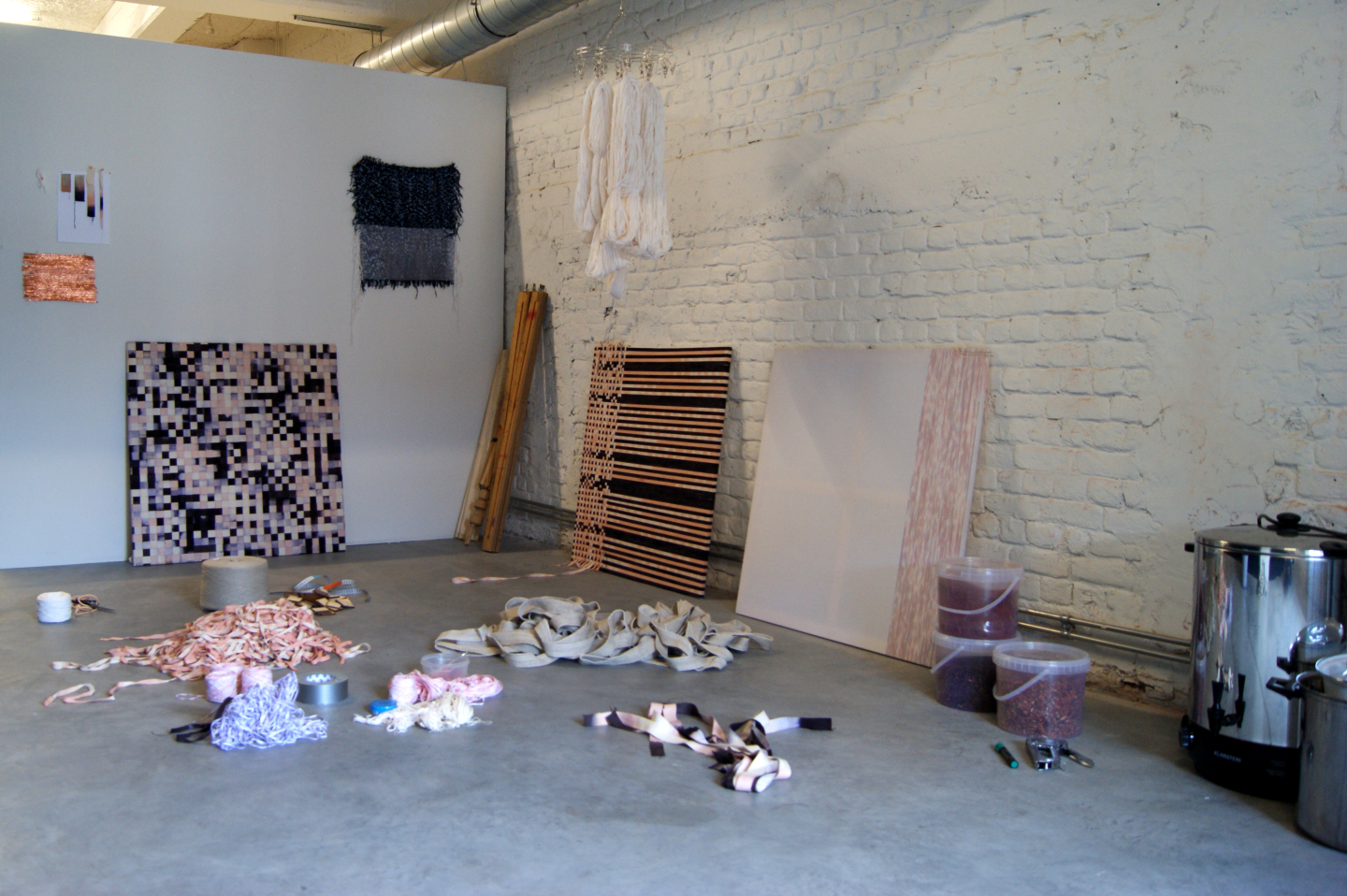Céline Vahsen
—

ABOUT Céline'S RESIDENCY AT IMAL.
With a contemporary approach, Céline explored techniques that are rooted in ancestral textile creation. The research she started at iMAL involves the development of textile techniques, manual weaving and dyeing, enhanced by industrial input. Sustainable production methods were used, craftsmanship and industrial creation fused together. The visual outcome is inspired by coding language and the mathematical system of looms –their binary codes–, translating and transmitting technical jacquard language into graphical artworks. The creation of pixelated patterns in the fundamental weaving structure itself, a series of visual works emerged through woven and natural dyed ribbons.
Our current Western society has mainly lost the relation to production implications. The manufacturing processes have become increasingly abstract, the understanding of how something is made has been lost. Therefore, she created soundworks which complement the visual outcome. She made the invisible machinery audible and triggered a further sense by adding another level to pure aesthetic.
The computers we use today have their beginnings in textile history. If it wasn't for the invention of the jacquard weaving loom, contemporary technologies related to the internet and the modern-day computer might have been invented, the digital world we know today would have taken a different shape. During the residency, she questioned technology implications and textile history in our society today.
BIO
After studying Applied Arts at ESA St-Luc Brussels, HfGK Lucerne and HAW Hamburg, Céline Vahsen obtained her Master's degree in the textile department of ENSAV La Cambre.
The starting point for her work is the human and cultural legacy of the textile medium.
Textiles exist and are interpreted by a culture that carries codes. This technical knowledge has been enriched by long-term exchanges via historical trade routes and passed on by using the hand as a tool, making it embodied knowledge. In most societies worldwide, textile techniques were communicated and preserved through gestures and nonverbal language. A woven fabric is thus never empty, it contains a story and a narrative. She is interested in the cultural dimension of textiles, in their e-motion (movement).
Her technical research includes various references and traditions from geographically dispersed, hybrid cultures, as well as customs from different periods throughout the history of weaving.

